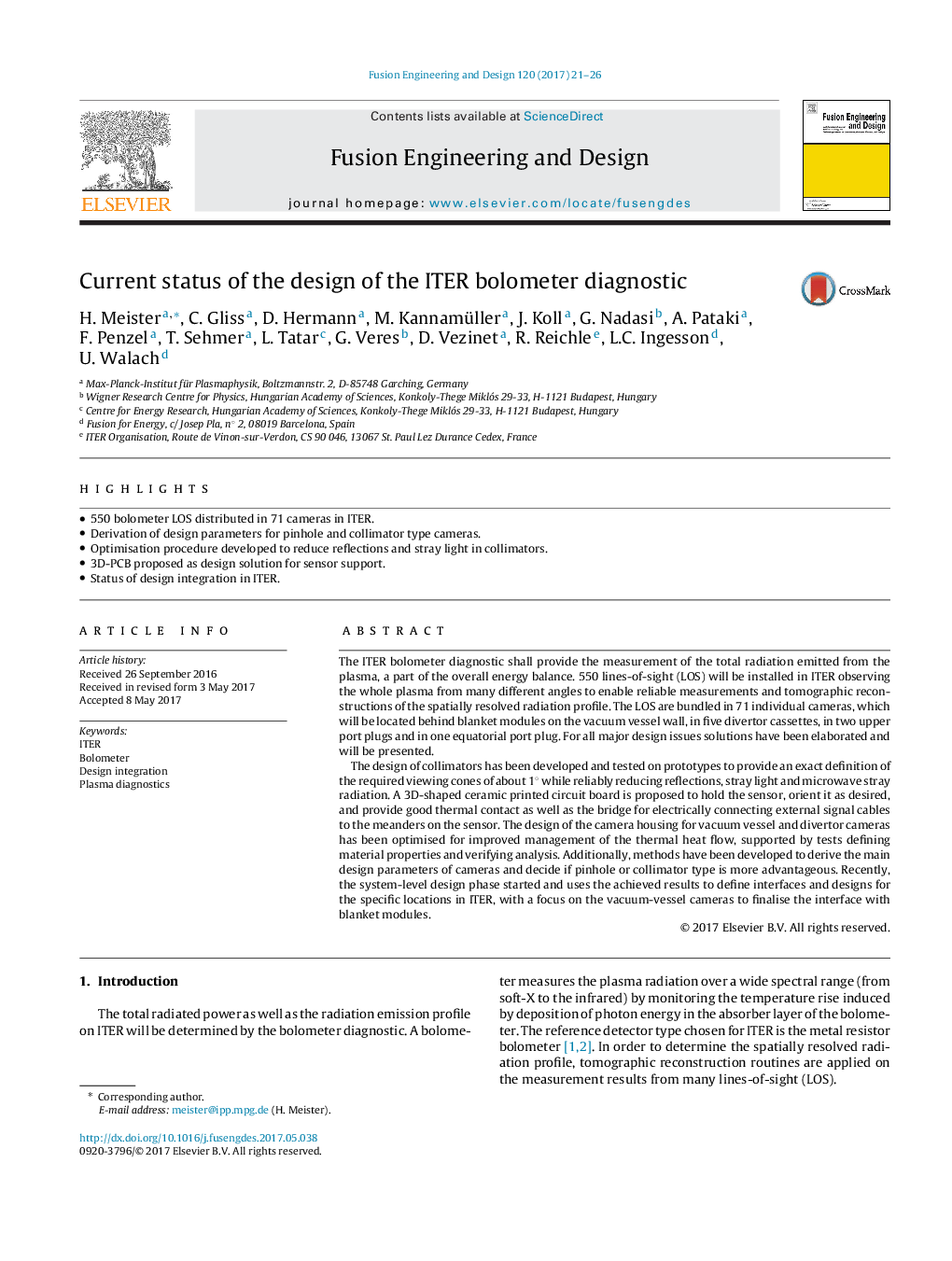| Article ID | Journal | Published Year | Pages | File Type |
|---|---|---|---|---|
| 4921091 | Fusion Engineering and Design | 2017 | 6 Pages |
Abstract
The design of collimators has been developed and tested on prototypes to provide an exact definition of the required viewing cones of about 1° while reliably reducing reflections, stray light and microwave stray radiation. A 3D-shaped ceramic printed circuit board is proposed to hold the sensor, orient it as desired, and provide good thermal contact as well as the bridge for electrically connecting external signal cables to the meanders on the sensor. The design of the camera housing for vacuum vessel and divertor cameras has been optimised for improved management of the thermal heat flow, supported by tests defining material properties and verifying analysis. Additionally, methods have been developed to derive the main design parameters of cameras and decide if pinhole or collimator type is more advantageous. Recently, the system-level design phase started and uses the achieved results to define interfaces and designs for the specific locations in ITER, with a focus on the vacuum-vessel cameras to finalise the interface with blanket modules.
Related Topics
Physical Sciences and Engineering
Energy
Energy Engineering and Power Technology
Authors
H. Meister, C. Gliss, D. Hermann, M. Kannamüller, J. Koll, G. Nadasi, A. Pataki, F. Penzel, T. Sehmer, L. Tatar, G. Veres, D. Vezinet, R. Reichle, L.C. Ingesson, U. Walach,
